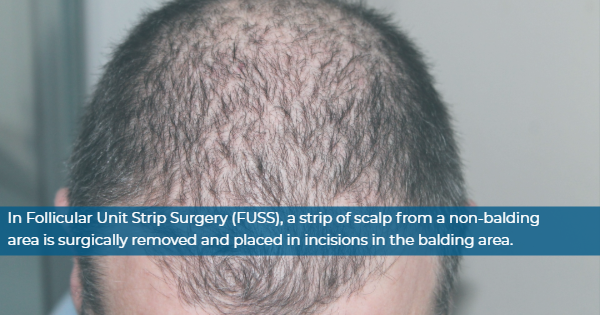Understanding Hair Loss and Restoration

Society has always made accusations regarding balding, indicating it was only a “man thing” caused by becoming middle-aged. Others have assumed it was a chemical imbalance issue due to lack of, or over production of, the male hormone testosterone. Over the years, as medicine advanced and new discoveries were made, one major finding was that men and women produce testosterone. Medical professionals also realized that this hormone fluctuates differently in men and women, and alternates levels inconsistently between the two sexes. Proving this fact opened up a door of questions leading to why balding affects both, and why testosterone was one of the leading factors.
Due to this realization, both women and men are seeking out treatments to help stop the progression of hair loss — anything from changing their shampoos and trying scalp massage therapies, diet alterations and additional exercise routines, essential oils and vitamins to micropigmentation and locating the nearest hair transplant clinic. Any method of hair restoration may seem like an improvement, but not all have the desired effect on the stimulation of the follicle. And it’s for this reason we’ve seen a recent explosion of hair transplant clinics and hair restoration specialists across the globe.
Within the walls of a hair transplant clinic, you will be enlightened to the multiple procedures that can be accomplished. Once seen by a hair loss specialist, and deciding on your need, the desired result, and the type of treatment required, a single day will be all that is required. There are also staff available, such as a female hair loss specialist, whom examine only women and handle their particular hair loss treatment.
Some of the treatments available at a hair transplant clinic are FUSS (Follicular Unit Strip Surgery), scalp micropigmentation, micropigmentation vitiligo, and scar revision. FUSS involves removing a strip of your scalp from a non-balding area and placed in incisions where the balding area is located. This procedure is older and the potential for complications is greater than with some of the others listed, but it still transfers viable hair follicles to non-viable areas of your scalp. The scarring is minimal, it typically takes two to five days to heal, and the donor hair will begin to fall out after three weeks.
Scalp Micropigmentation is non-invasive and deposits pigment into the scalp for the appearance of density (thickness). This form of treatment restores the receding hairline, makes already thinning hair appear thick, and camouflages scarring. By duplicating your natural hair follicles/hair color, this procedure can aide in reinforcing thinning areas and create an illusion of thicker, stronger hair. After the initial appointment, you will only need to visit your hair transplant clinic for “touch-ups” every four to six years.
Another procedure growing in popularity is Micropigmentation Vitiligo, otherwise known as “permanent makeup”. This type of treatment is in which a minute, metabolically inert pigment granules are implanted just beneath the skin (like tattoos) and are primarily used for cosmetic purposes but can also be for corrective enhancement. Sometimes a topical anesthetic (a numbing medication) can be applied to keep you comfortable, and colorations are individually mixed to match your unique pigment. This process typically takes around two hours, and you will see some results immediately, but full development will shine best at three weeks.
In an attempt to minimize scarring, a procedure call Scar Revision is available. This form of treatment will blend in your scar(s) to your surrounding skin tone(s) and texture(s). Depending on the type and degree of scarring/damage, you may have three different forms of treatment — anything from topical to surgical. These will be items for discussion once you’ve set your appointment at the hair transplant clinic.
Leave a Reply